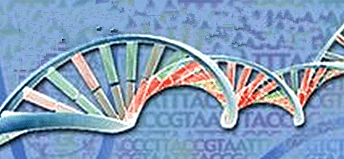The 21st century is a biological and information age which marks that genomics research has shifted from the structural genomics to the functional genomics. Additionally, as for the study of gene functions, researchers refer to the large-scale and massive analysis instead of a single gene. Recently, the latest research progresses in genomics have aroused a hot discussion around the entire biological realm. The details are as followed.
1. Gene ABCC9 decides the sleep duration.
Why some people can always keep energetic even though they merely sleep for 5 to 6 hours? Why someone can still yawn after 10 hours’ sleeping? German researchers found a kind of gene that resulted in less sleep, which might explain the former questions. Gene ABCC9 encodes the SUR2 protein. Such protein is one component of the composition of potassium channels. In fact, ABCC9 exists in the heart, skeletal muscles, pancreas and brain of mammals. Meanwhile, it is also an ancient gene. Similar gene can appear in the drosophila. Researchers from the University of Munich and Leicester worked together to conduct experiment with drosophila and they found drosophila’s sleep duration reduced during the night.
2. The University of Massachusetts deciphered the genome of monarch butterfly.
Neurobiologists from the University of Massachusetts Medical School successfully deciphered the genome sequence of the only migratory butterfly on earth named monarch butterfly, which defines the butterfly’s gene in identifying the direction. In addition, the achievement explains why these butterflies can remember the time and space during their migratory process, so does the genetic programming behind these butterflies. Furthermore, analyzing the genetic basis of the monarch butterfly’s long-distance migration not only helps to learn their special instinct but other migratory animals’ instinct as well.
3. The Osaka University found the inherited gene in licorice’ medicinal ingredients.
A research team from the Osaka University found a kind of inherited gene in licorice’ medicinal ingredients, and then they successfully produced licorice’s medicinal ingredients. In fact, such ingredients can enhance liver function, anti-inflammation, and so on. Apart from this, the team also found that there were two inherited genes participated in the synthesis of licorice’s pharmaceutical ingredient-glycyrrhetinic acid. The team plans to promote the production and conducts experiments with soybeans and other plants.
To be brief, the latest research progress in genomics will certainly lay a significant effect on people’s daily life, such as the improvement of life quality. Clearly, these progresses can help researchers to explore larger genomic area as well.


 Sample Submission Guidelines
Sample Submission Guidelines